Six things to know for cannabis legalization in Nepal
South Asia Check / March 10, 2020
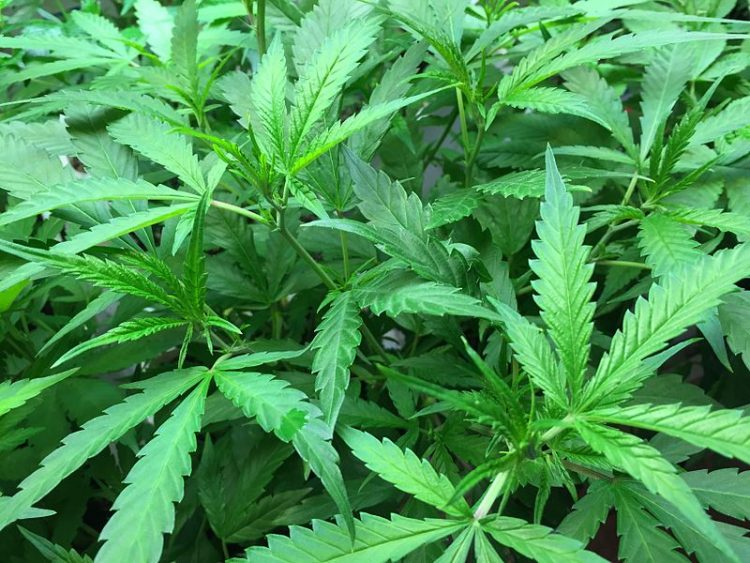
Photo: Jeniffer Martin/ Wikimedia Commons
By Deepak Adhikari and Sanjog Shiwakoti
Over four decades after Nepal criminalized the consumption and cultivation of cannabis, a debate has started over whether Nepal should lift the ban. This comes at a time when a cannabis legalization wave is sweeping across the Western world. On January 27, Nepal Communist Party (NCP) lawmaker Birodh Khatiwada, with the backing of 44 lawmakers, registered a motion of public importance in parliament advocating the legalization of cannabis. And on March 2, Sher Bahadur Tamang, a lawmaker from the same party, registered a private bill in parliament proposing that cannabis should be legalized. Speaking on Sagarmatha Television the next day, Khatiwada cited countries such as Canada and the US that have already legalized cannabis and argued that Nepal should follow suit.
What is cannabis?
There are mainly two widely known cannabis plant types — hemp (Cannabis sativa), which is used for producing textile, paper and animal feed among other things, and marijuana, which is used for medicinal and recreational purposes. The major aspect that makes the two different is the tetrahydrocannabinol (THC) level – a psychoactive ingredient among hundreds of substances present in the two plants. The THC level in marijuana is between 3-30%, whereas it is below 3% in hemp. A growing body of research has found that cannabis can be effective for medical purposes such as pain relief.
What is in the cannabis bill?
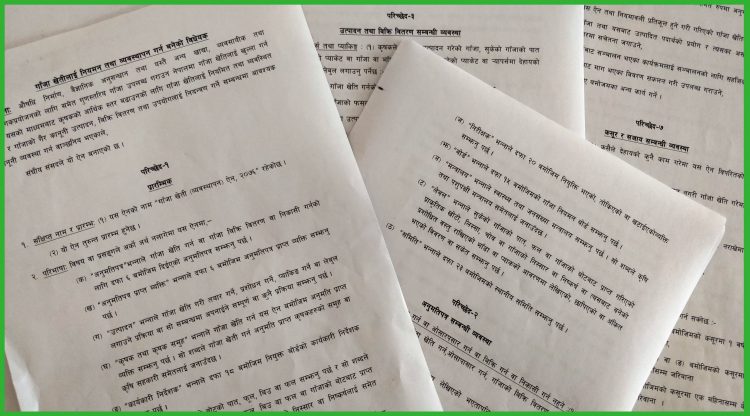
The bill, registered in the lower house of parliament, seeks to regulate and promote the cultivation and trade of cannabis in Nepal. It proposes encouraging farmers to engage in commercial cultivation of cannabis for medical purposes. It is not clear whether the bill seeks to legalize cannabis for recreational purposes as well. The bill proposes setting up a board at the center and agricultural knowledge centers in the districts. These centers shall issue licenses to farmers for the production and sale of cannabis. The bill also proposes restricting farmers from cultivating only cannabis in their farmlands to ensure crop diversification. Likewise, a household can grow up to six cannabis plants, without seeking permission. But for engaging in commercial cultivation, the farmer must be of age 18 or above and acquire a license.
Which countries have legalized cannabis?
In recent years, Western countries have been at the forefront of legalizing cultivation, production and sale of cannabis. In 2013, Uruguay became the first country in the world to fully legalize cannabis for medical and scientific purposes as well as for industrial and recreational use. In 2018, Canada legalized it for recreational, medical and research purposes. The Netherlands legalized the medicinal use of cannabis in 2000, and created the Bureau for Medicinal Cannabis (BMC), which helped set up a strong pharmacological industry.
In 1996, California became the first state in the US to legalize medical cannabis in defiance of the federal law. Thailand is the first Southeast Asian country to legalize cannabis for medical use and research purposes. Other countries that have legalized cannabis include Peru, Chile, Germany, Mexico, Bolivia, Brazil, Jamaica, Colombia, Israel, Czech Republic.
Why Nepal banned cannabis in the 1970s?
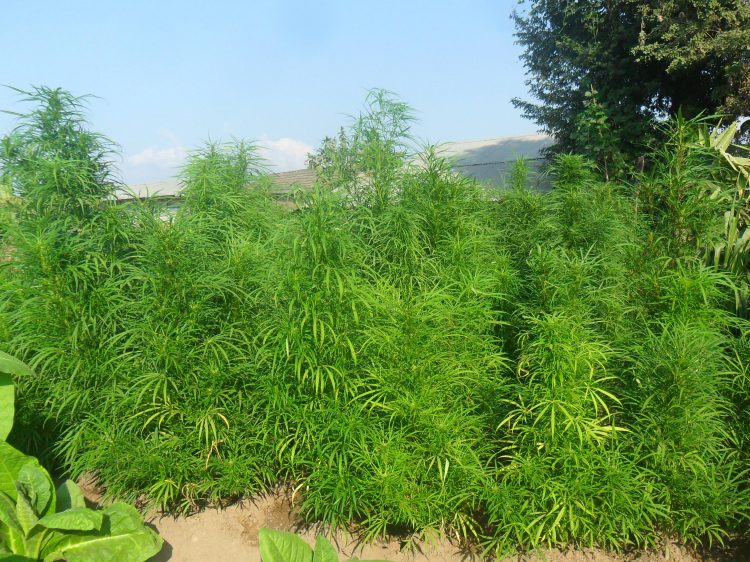
Cannabis grows in profusion in Nepal. Photo: Suresh Bidari
Cannabis has remained a part of human civilization all around the world. In countries like Nepal and India, cannabis holds religious (cannabis is used as an offering to Lord Shiva) and cultural significance. In a chapter of a book titled Cannabis and Culture, James Fisher has written about the use of cannabis in local communities in Nepal. The elderly use it for medicinal and recreational purposes and even in cooking. Ayurvedic doctors use it along with other herbs to cure diarrhea, cholera, tetanus and insomnia among other illnesses.
In the late 1960s and early 1970s, the hippies –Western youths involved in a counterculture movement — travelled to Nepal overland from Europe in their quest for spiritual peace. They would use hallucinogens and cannabis, which was in abundance in the Kathmandu Valley. However, due to sustained pressure from the United States, the United Nations and even the locals, Nepal government on July 16, 1973 banned cannabis. It is illegal to consume, cultivate and trade in cannabis, according to the Narcotic Drugs (Control) Act, 2033.
In 2003, Nepal also signed the United Nations’ ‘Single Convention on Narcotics Drugs 1961’.
Should Nepal legalize it?
Nepal’s diverse climate and ecology are best suited for growing cannabis, according to researches. Fisher has written that cannabis is found in most parts of the country except in the extreme north. Despite Nepal having a huge potential for becoming a major cannabis producer, its market remains unexplored in lack of legalization. According to a study published in the American Journal of Agriculture Research, due to its fertile lands and favorable climates, Nepal has the potential to become a cannabis production hub.
“We should begin with (cultivation of) hemp because it’s easy to grow and is helpful for soil fertility. Hemp could be used to produce various commercial and value-added products,” Ravi Pradhan, a pro-cannabis campaigner, told South Asia Check. Hemp is used to make rope, cloth, fuel and paper among other things.
However, economist Bishwa Poudel doubts cannabis has economic potential in Nepal saying it was already tested and dropped by the tourism sector in the 1970s. “Cannabis might be appropriate for medicinal use, but not for tourism promotion and recreation,” he said.
Illegal cultivation of cannabis in districts
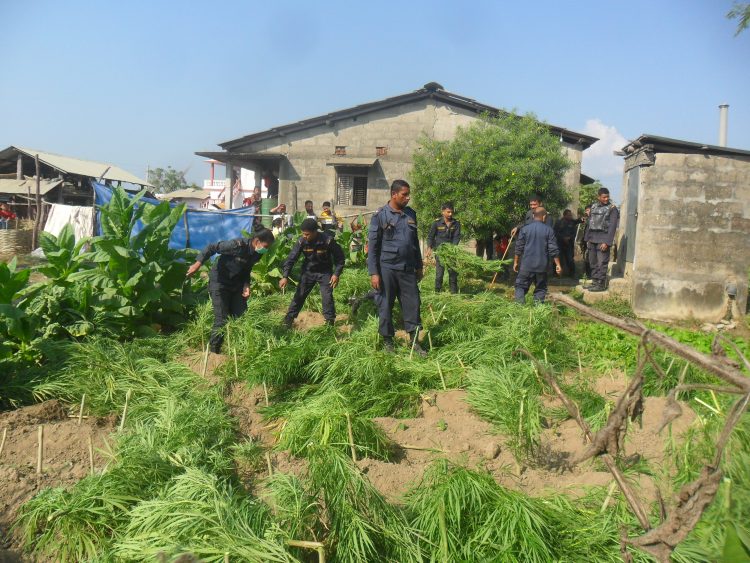
Police destroying cannabis plants in a village in Parsa district in this undated photo. Photo: Suresh Bidari
Cannabis grows everywhere in Nepal—in the kitchen gardens, fields and in the wild. People are still cultivating it, although it is illegal, in many parts of the country.
Every year, police destroy a large number of the plants across the country. According to the Narcotics Control Bureau (NCB) of Nepal Police, police destroyed around 17,762 cannabis plants in the fiscal year 2073/74 [2016/17]. Likewise, some 9,464 cannabis plants were destroyed in 2074/75 [2017/18] and 198,492 in 2075/76 [2018/19].
According to the latest quarterly report of the Narcotics Control Bureau, police seized 9633.5 kg of cannabis and 2390.8 kg of hashish between mid-December 2019 and mid-October 2019.
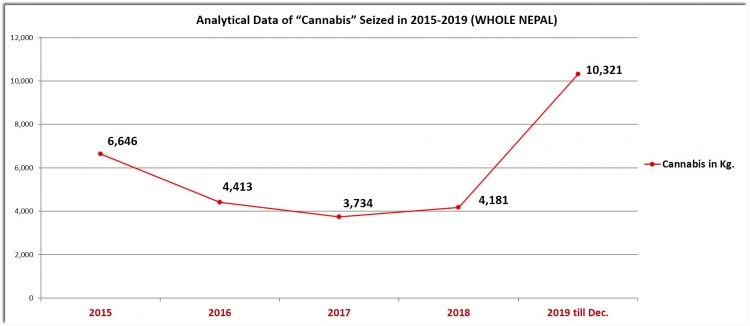
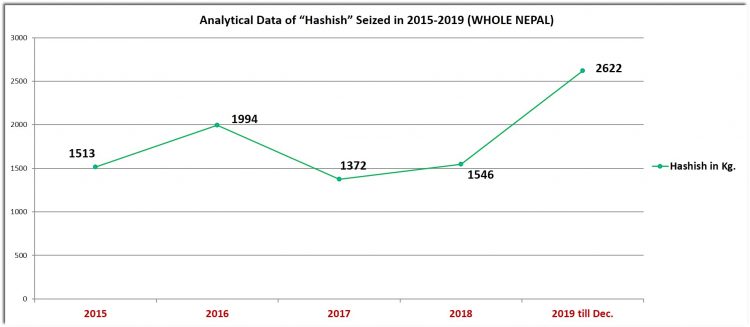
Source: Narcotics Control Bureau, Nepal Police
This material is copyrighted but may be used for any purpose by giving due credit to southasiacheck.org.
Comments
Latest Stories
- In Public Interest Covid-19 cases are low, but that’s not an excuse to avoid vaccination
- In Public Interest What is BF.7, the sub-variant that has the world by its grip?
- In Public Interest Threat of a new Covid-19 wave looms large amid vaccine shortage in Nepal
- In Public Interest As cases decline, Covid-19 test centres in Kathmandu are desolate lot
- In Public Interest Dengue test fee disparity has patients wondering if they’re being cheated
- In Public Interest As dengue rages on, confusion galore about what it is and what its symptoms are. Here’s what you need to know
In Public Interest
 Covid-19 cases are low, but that’s not an excuse to avoid vaccination
The Pfizer-BioNTech bivalent vaccines authorised by the Nepal Government provide better protection a...
Read More
Covid-19 cases are low, but that’s not an excuse to avoid vaccination
The Pfizer-BioNTech bivalent vaccines authorised by the Nepal Government provide better protection a...
Read More
- What is BF.7, the sub-variant that has the world by its grip?
- Threat of a new Covid-19 wave looms large amid vaccine shortage in Nepal
- As cases decline, Covid-19 test centres in Kathmandu are desolate lot
- Dengue test fee disparity has patients wondering if they’re being cheated
- As dengue rages on, confusion galore about what it is and what its symptoms are. Here’s what you need to know